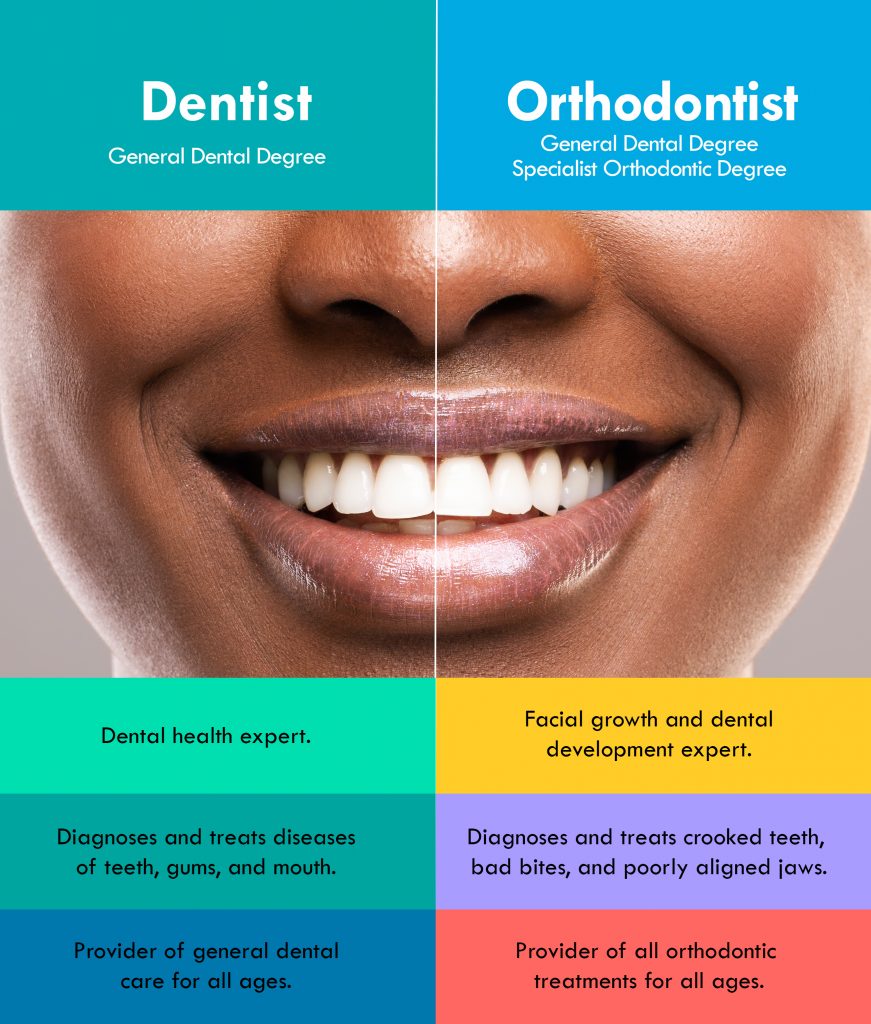Getting The Legacy Orthodontics To Work
Table of ContentsSome Known Incorrect Statements About Legacy Orthodontics Getting My Legacy Orthodontics To WorkSome Known Factual Statements About Legacy Orthodontics The smart Trick of Legacy Orthodontics That Nobody is DiscussingIndicators on Legacy Orthodontics You Should Know
At Advanced Orthodontics, we provide clients with a holistic treatment experience. On top of that, we provide adjustable treatment routines, flexible payment options and an enjoyable, pleasurable experience. clear braces. Telephone call ( 480) 357-4900 today to learn more and routine a visit.An orthodontist is a dentist trained to detect, stop, and treat teeth and jaw irregularities. They deal with existing problems and are educated to recognize troubles that may develop in the future. Orthodontists function with people of all ages, from youngsters to adults. People typically connect an ideal smile with healthiness.
Malocclusion, or misaligned teeth, can lead to oral concerns, including dental cavity, gum tissue illness, and challenging or uncomfortable chewing. But not everyone is born with straight teeth. If you have a negative bite or big spaces between your teeth, you might want to speak with a dental professional concentrating on orthodontic care.
Rumored Buzz on Legacy Orthodontics
( Photo Credit History: DigitalVision/Getty Images) Orthodontists make use of repaired and removable oral devices, like braces, retainers, and bands, to alter the position of teeth in your mouth. Orthodontic treatment is for oral problems, including: Jagged teethBite issues, like an overbite or an underbiteCrowded teeth or teeth that are also much apartJaw misalignmentThe objective of orthodontic treatment is to boost your bite.
While you might assume of orthodontists as mainly for kids or teens who require braces, they can deal with dental issues at any kind of age. Orthodontists go to university, oral college, and orthodontic school.
, but not all dental practitioners are orthodontists. They focus on 2 locations: Exactly how to correctly and safely relocate teeth Exactly how to effectively guide development in the teeth, jaw, and faceOnce an orthodontist has actually completed training, they have the alternative to become board licensed.
An Unbiased View of Legacy Orthodontics
Misalignment, or malocclusion, is one of the most common reason individuals see an orthodontist. It is genetic and is the result of dimension differences between the top and lower jaw or in between the jaw and teeth. Malocclusion results in tooth congestion, an askew jaw, or irregular bite patterns. Malocclusion is usually treated with: Your orthodontist connects steel, ceramic, or plastic square bonds to your teeth.
If you have just small malocclusion, you may have the ability to use clear dental braces, called aligners, instead of typical braces (https://www.ted.com/profiles/47882171). Some people need a headwear to aid relocate teeth right into line with pressure from outside the mouth. After dental braces or aligners, you'll need to wear a retainer. A retainer is a personalized gadget that maintains your teeth in position.
They can create extra area in the mouth without having to draw teeth. Orthodontists use cords, medical screws, or plates to support your jaw bone.
You might need to see an orthodontist if you have: Crowding or not enough area for every one of your teethOverbite, when your upper teeth come your base teethUnderbite, when your base teeth are too much forwardSpacing or concerns with gapsCrossbite, which is when your top teeth fit behind your base teeth when your mouth is closedOpen bite or an upright void in between your front base and top teethMisplaced midline, when the facility of your base and top teeth don't align Remedying a dental malocclusion can: Make attacking, eating, and talking easierImprove the balance of our face and your general appearanceEase pain from temporomandibular joint conditionsSeparate your teeth and make them much easier to clean up, assisting stop tooth degeneration or tooth cavities It's often a dental professional that first notices misaligned teeth during a routine exam.
Legacy Orthodontics Fundamentals Explained

Throughout your initial orthodontic appointment, you'll likely have: An oral examPhotos taken of your face and smileDental X-raysPanoramic (360 level) X-rays of your face and headImpressions to produce mold and mildews of your teethThese examinations will help your orthodontist recognize exactly how to wage your therapy. braces. An orthodontist is a dental professional who's had training to treat your teeth and jaw
Orthodontists may perform surgical procedure, exams,X-rays,and even more to assist you achieve an extra comfortable, healthier smile. An orthodontist is concentrated on your bite, so something like a cracked tooth would be taken care of by a dentist. Orthodontists are dental experts yet not all dental practitioners are orthodontists. Orthodontists are focused on your bite, or the way your teeth fit with each other, and the straightness of your teeth.
Ever before wondered just how stars constantly seem to have flawlessly lined up teeth? The solution often lies in the knowledgeable hands of an orthodontist. However just what does an orthodontist do? Orthodontists are oral experts who concentrate on fixing abnormalities in the teeth and jaws. Their experience surpasses just developing a beautiful smile; it includes boosting your total oral wellness and function.
The Ultimate Guide To Legacy Orthodontics

While dental braces are one of the most commonly acknowledged orthodontic treatment, orthodontists have a varied toolkit at their disposal. The certain strategy picked depends on the severity of the case, the individual's age, and specific choices. These tried-and-true braces use a system of brackets bonded to the teeth and linked by cables.
Clear aligners, like Invisalign, are a popular alternative for patients looking for an read more extra very discreet therapy choice. These removable trays are personalized to considerably change the teeth's setting. Headgear may be made use of in conjunction with braces or aligners to use added targeted pressures, especially for dealing with jaw disparities. In situations of narrow jaws, palatal expanders can be made use of to produce space for proper tooth alignment.